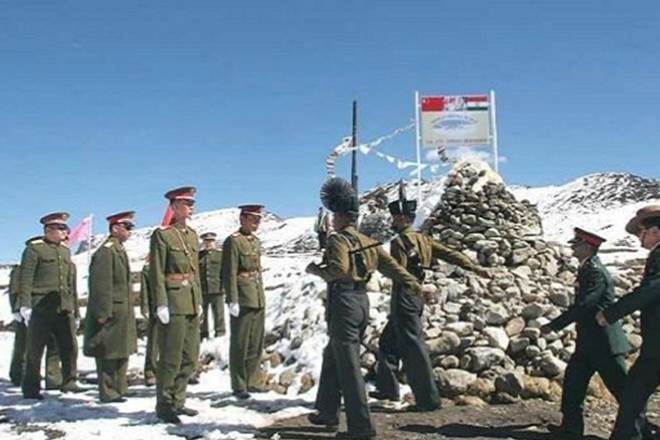Indian Prime Minister Narendra Modi has made a U-turn from his earlier statement that Chinese troops did not enter Indian territory, and he is now accusing China of being the “aggressor.”
But in doing so, Modi could exacerbate the decline in India’s economy, particularly in the midst of the Covid-19 pandemic, which added salt to the wound of the country’s failing ambition of becoming a manufacturing or economic powerhouse.
However, the prime minister’s “Make in India” industrial policy of turning the country into a manufacturing powerhouse rivaling China was more hype than real, because India did not have a reliable infrastructure system and a pool of skilled labor.
Poor roads, frequent power shortages, a lack of skilled labor and a supply chain have prompted many foreign investors to pull out. As a result, industrial production declined and unemployment rose.
The economic woes were made worse by Covid-19, which revealed India’s woefully inadequate health-care system and the government’s poor handling of the pandemic. The surging number of infections and deaths forced industrial or business closures, prompting the International Monetary Fund to project the Indian economy would contract by 5% in 2020.
In light of the solemn economic statistics, escalating border tension with China is the last thing India needs. It is already fraught with insurmountable problems of poverty, poorly funded education and healthcare systems, an unreliable infrastructure system, severe climate change issues and other things.
According to the US-based CIA Factbook, the number of impoverished as a proportion of the population was at time of publication, respectively, 13.4%, 50.4% and 82.3% living on less than US$1.90, $3.20 and $5.50 a day. Also, about 50% of households do not have indoor toilets.
Infrastructure, from roads to power generation, is woefully inadequate, requiring trillions of dollars to make it efficient and competitive. Although India has a “demographic dividend” in light of its large youth population, the young were largely unemployable because of insufficient funding for education and skills training.
Therefore, escalating tensions on the border with China is economic insanity. Allocating money for arms purchases instead of spending on socio-economic enhancing programs could prolong or even perpetuate India’s economic underdevelopment.
Besides, it is unclear that India, even with the help of its Indo-Pacific partners – the US, Australia and Japan – could deter China from abandoning its territorial claims no matter how much it spends on weapons. China’s economy is nearly five times the size and it is armed with more advanced conventional and nuclear weapons than India.
History will also tell that the nearly 60-year-old border disputes, involving a combination of fighting and negotiation between the two countries, have gained India nothing but cost it wasted lives and much-needed funds for socio-economic development. Indeed, losing the 1962 Sino-Indian war humiliated India and caused it to lose some territory.
There is no reason to believe that escalating tensions or even going to war against China, as many Indian nationalists demanded, would fare better. The opposite might emerge, trying to push China out of the Indian-claimed Aksai Chin, even with US help, and that could result in India losing more territory.
Furthermore, a war against China could worsen India’s socio-economic plight because it would divert even more resources from development to the war effort.
Non-military efforts such as downgrading the Sino-Indian trade relationship would be equally devastating to the Indian economy, and to lesser extent, that of China. A big chunk of consumer-goods imports, particularly electronic products such as smartphones, are brought in from China.
The Chinese-made goods are of relatively high quality and low-priced, precluding the Indian consumers from finding alternative sources. Imposing a tariff or holding Chinese goods in warehouses would increase prices, reducing consumption which, by the way, accounts for almost 60% of India’s gross domestic product.
According to the online news portal SundayGuardianLive, Chinese investors have put about US$4 billion into Indian technology startup companies, funding 18 of 30 Indian unicorns. In restricting that investment, India would be shooting itself in the foot because that would stifle the country’s technology or innovation ambitions.
For the sake of the country’s national interests, India should be receptive to China’s offer of shared development, joining the latter’s Belt and Road Initiative (BRI) and taking advantage of the benefits afforded by the organizations to which the two countries belong – the Asian Infrastructure Investment Bank, BRICS Development Bank and Shanghai Cooperation Organization. Together, they could finance India’s huge infrastructure investment needs.
Joining the BRI would increase India’s trade opportunities, not only with China and with the other participating countries as well. Two-way trade between China and the roughly 60 countries exceeded $7 trillion in 2019. That number will grow.
It is therefore in India’s national interest to recalibrate its China policy, from confrontation to cooperation.
Ken Moak taught economic theory, public policy and globalization at university level for 33 years. He co-authored a book titled China’s Economic Rise and Its Global Impact in 2015. His second book, Developed Nations and the Economic Impact of Globalization, was published by Palgrave McMillan Springer.


